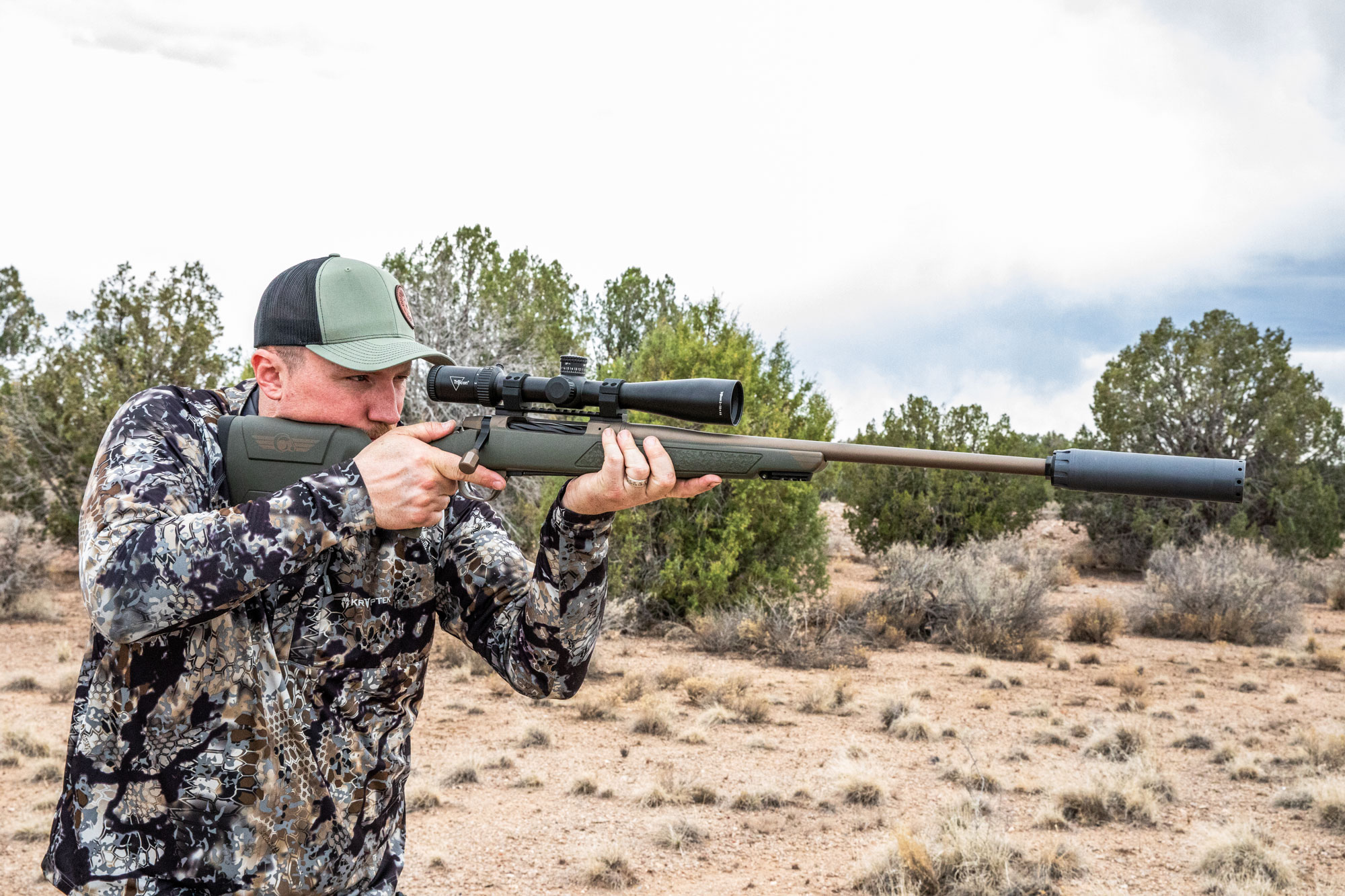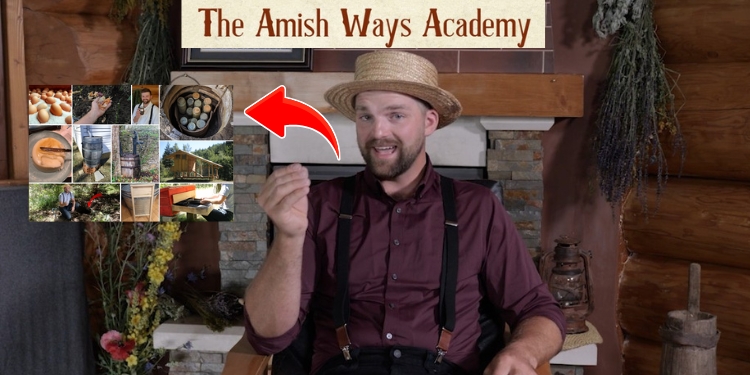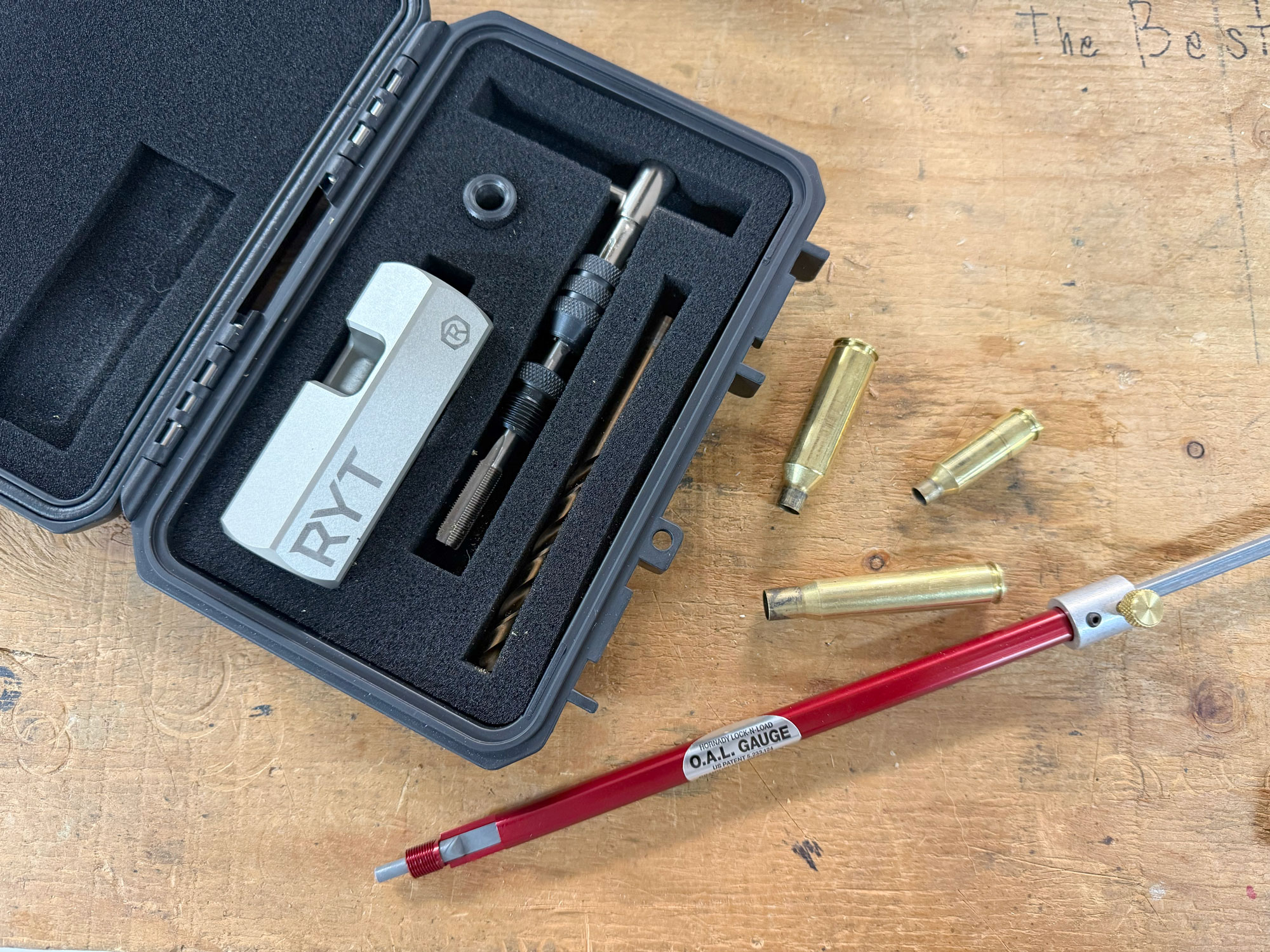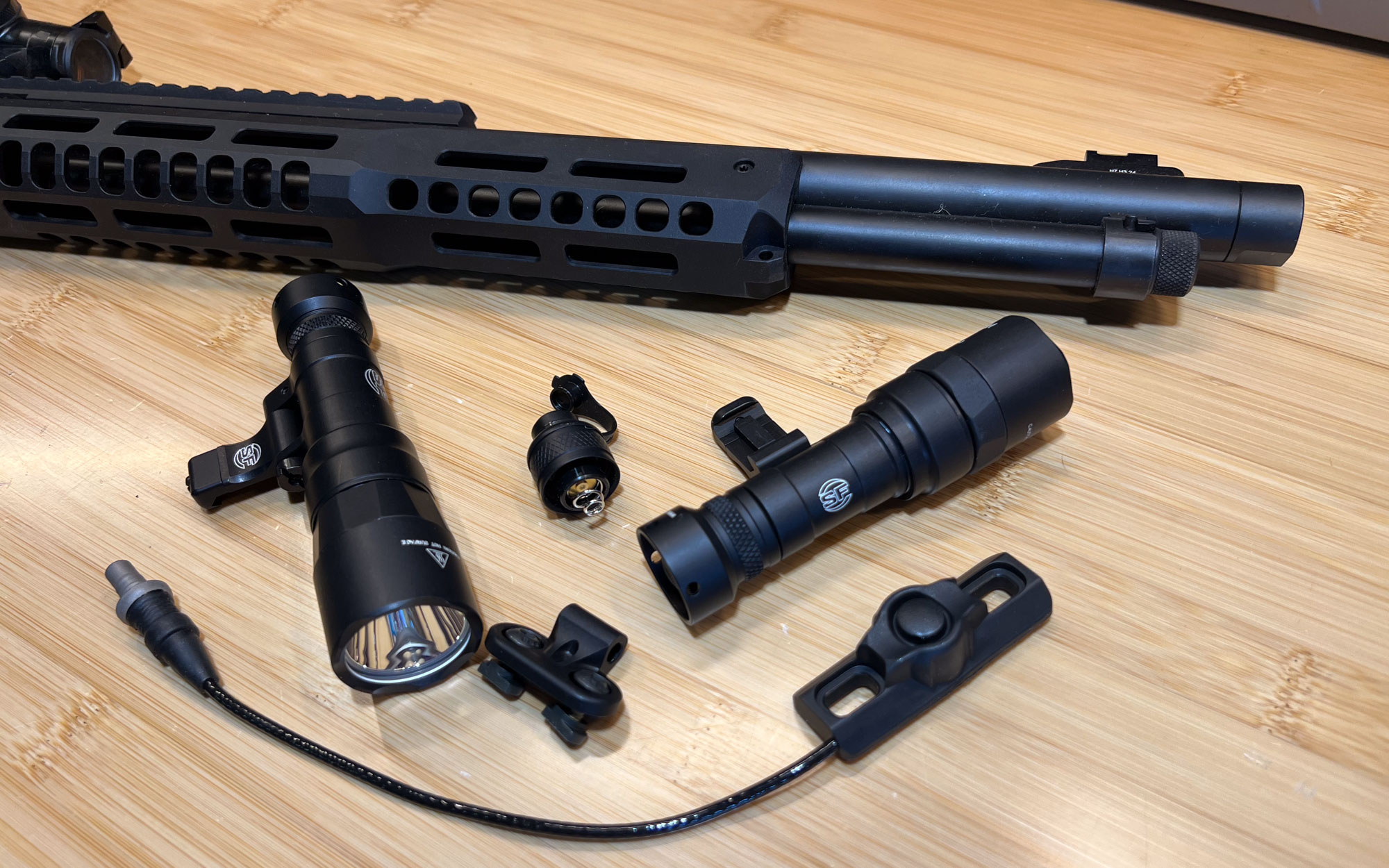Christensen Arms Evoke Rifle, Tested and Reviewed

We may earn revenue from the products available on this page and participate in affiliate programs. Learn More ›
The Christensen Arms Evoke is one of the best value hunting rifles of the year. Initially introduced in 2024, it saw some changes before getting fully into production, but it’s shipping now in 2025. Rather than aiming for the ultimate weight reduction that Christensen is known for, the Evoke is designed to be a more affordable, general-purpose rifle. It’s priced hundreds of dollars less than other models. We put the Evoke through thorough accuracy and practical field testing at our annual gun test, and it ran away with the best value award. Here’s a more detailed look at what we like about it and where it could improve.
Christensen Arms Evoke Specs
See It
Pros
- Great accuracy
- Threaded all-steel barrel
- Good ergonomics
- Compatible with AICS magazines
Cons
- Injection-molded stock is a bit noisy
- Action: Two-lug M700-pattern with M-16 style extractor
- Stock: Injection-molded polymer
- Cartridge: 6.5 CM (tested), .243 Win., 6.5 PRC, .270 Win., 7mm Rem. Mag., 7mm PRC, 7mm Backcountry, .308 Win., .30/06, .300 Win. Mag., .300 PRC, .375 H&H, .458 Bushmaster
- Capacity: 3+1
- Weight: 7 pounds, 8 ounces (measured)
- Trigger: Triggertech, 3 pounds, 6 ounces (measured)
- Barrel: 20 inches, 1:8 twist, stainless, button-rifled, threaded ⅝-24
- Length: TK inches
- Price: $854
Key Features
- Stainless all-steel barrel
- Injection-molded polymer stock
- AICS-compatible bottom metal
- Triggertech trigger
- Thick hybrid-angle grip
- Picatinny bipod rail
- Side port muzzle brake
Christensen Arms Evoke Accuracy and On-Range Performance
We take our accuracy testing seriously at Outdoor Life, for two big reasons. We want to give you valid data that properly represents a gun’s capabilities, but we also want to know what we can reasonably expect from a rifle with a given feature set and price point. With a large collection of standardized data, we can tell you whether a rifle is truly a good shooter or just a three-shot bamboozler. To get a repeatable, consistent representation of a rifle’s cone of fire, we combine four five-shot groups, fired from 100 yards. into a 20-shot aggregate. We consider group size, but mean radius is the figure that’s most informative. It takes every shot into account rather than just the worst two.
| Ammo | 5-Shot Group Avg. | 20-Shot Group ES | Mean Radius | MV (fps) | ES (fps) | SD (fps) |
| Sig 140-gr OTM | .628 in. | .97 in. | .28 in. | 2534 | 82 | 21.6 |
| Ber 135-gr CH | .445 in. | 1.07 in. | .29 in. | 2627 | 56.7 | 12.8 |
| Fed 140-gr FT | .803 in. | 1.18 in. | .33 in. | 2666 | 67.9 | 17.8 |
There’s no cheating the system, and when we find great-shooting rifles, we can brag on them without reservation. The Christensen Evoke that we tested is one of those rifles. It shot many types of ammo well, but the three above produced some of our best results. For reference, I can count on one hand the number of sub-thousand-dollar rifles I’ve tested that will print a 20-shot aggregate under an inch or, more telling, have a mean radius less than .3 inches over 20 shots. The Evoke hits well above its weight class in that regard.
Field Shooting with the Christensen Arms Evoke
In addition to our accuracy testing, shot prone off a bipod with a rear bag support, I and the rest of our test team ran the Evoke from varying field positions and supports. I’m a fan of the Picatinny rail on the fore-end, which is set into the stock so that the rail is flush with the bottom. It makes for easy mounting of a bipod without being obtrusive.
The stock’s smart ergonomics and relatively flat-bottomed fore-end work well in conjunction with a shooting bag, and we shot steel from positions off tires, barricades, tripods, tree limbs, dead logs, posts, and more. The MDT three-round magazine fits nearly flush and the rifle balances well for bagged positions with no rear support. The hybrid-angle grip is wide, beefy, and gave me great control over the rifle and trigger. It comes with an adjustable Triggertech trigger that has a curved shoe and compliments the geometry of the grip.
I found that the Evoke also worked well with higher-capacity single-stack magazines and the fore-end has ample room between the bipod and mag to settle into a shooting bag. This all makes for stable shooting in a variety of positions. The Evoke has drop-in bottom metal that fits just proud of flush with the stock and, despite not having a barricade stop, it fed smoothly when the magazine was braced against a shooting bag. Combined with stellar accuracy, these features make this a relevant choice for an entry-level NRL rifle too.
What Makes the Evoke Affordable?
We generally consider rifles priced under $600 as budget-priced, and those between $600 and $1,200 — where the Evoke firmly sits — as mid-priced. Most of Christensen’s rifles fall into the premium-priced, $1,200-plus category. So what did they do to make it more affordable, and what certifies it as a solid value?
One of the biggest cost-saving features is the use of a non-fluted, all stainless-steel barrel rather than their characteristic carbon-fiber-wrapped models. This comes at a slight weight penalty, but saves the shooter hundreds of dollars. Barrel lengths vary depending on cartridge choice, but they trend towards shorter barrels that are all threaded. The rifles come with a sleek side-baffle brake, but are easily fitted with a suppressor. An over-barrel can such as the OG from Unknown Munitions makes for a compact and effective overall package.
Another is the stock. It’s a relatively simple injection-molded polymer stock that’s simpler and easier to produce than ultralight carbon-fiber models like the FFT. The stock is basic but well designed. In addition to the good ergonomics described earlier, it sports a slightly elevated cheek piece, nicely-contoured rubber recoil pad, and laser-cut textured panels on the grip and fore-end. Unlike many other molded stocks in its class, the fore-end of the Evoke’s furniture is nice and rigid — though it can be deflected with a tight squeeze. Compared to others in this price range, it’s solid.
The stock does have a very plastic feel, and is a bit noisy, though not as hollow-sounding as many budget-priced rifles. It directs recoil well and is stable when shooting, but doesn’t give the dead feel of a well-designed carbon stock. I also wish that QD sling cups would have been included on the buttstock and in the Picatinny rail.
The Action
Originally, the Evoke was announced as a new three-lug action — but it never materialized in production. The Evokes hitting the shelves are using the two-lug Christensen M25 action, which is a push-feed similar to the Remington M700, but sports a couple of nice features. It uses an M-16 style extractor above the right-hand lug which is held in place by a roll pin. The bolt release is located at the rear of the receiver and has an oversized button for easy manipulation. The two-position safety on the trigger does not lock the bolt, and the action uses a separate recoil lug similar to similar-tier 700-pattern actions.
The Value
When we say a gun has value, we don’t mean it’s cheap. Those things are too often confused. Many basement gun aficionados compare only one or two features to determine value. It’s common to see, for example, folks compare snippets of accuracy data from their favorite rifle that appear similar, in order to discredit the well-earned value of a more expensive gun. It doesn’t work like that.
Value means you are getting your money’s worth in a rifle, whatever the cost. To consider that, we compare feature sets, ergonomics, and performance characteristics with other rifles in the same price range — but also consider less or more expensive guns and how they compare. Here are things that bolster the value of the Christensen Evoke:
- Good-quality M700-style action with improved M-16 extractor
- Corrosion-resistant Cerakote finish
- AICS bottom metal
- Design and construction of the stock
- A great trigger
- Suppressor ready
- Excellent accuracy
- Great versatility
Compared to other rifles in the $850 price range, there is a lot that stacks up in favor of the Evoke — and not much that doesn’t. In fact, many of its features are better than what you’ll find on rifles in the $1,000 to $1,200 price range. It’s objectively a great value.
Final Thoughts on the Christensen Evoke
I think that the two-lug Evoke we got was worth the wait. It’s a high-quality rifle that reduces cost in some smart ways rather than floundering by trying to re-invent the wheel. It’s a rifle that’s got great ergonomics and accuracy, quality components, and would work wonderfully as an all-purpose hunting rifle. Frankly, that’s all most hunters want.
Read the full article here










